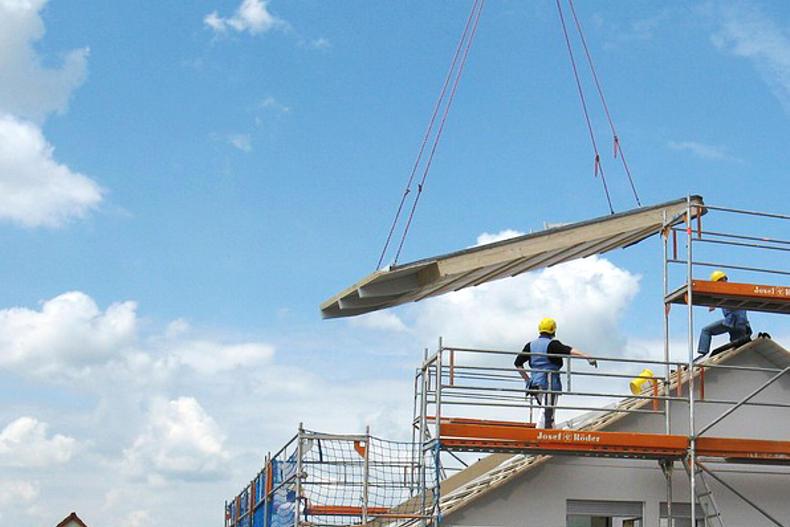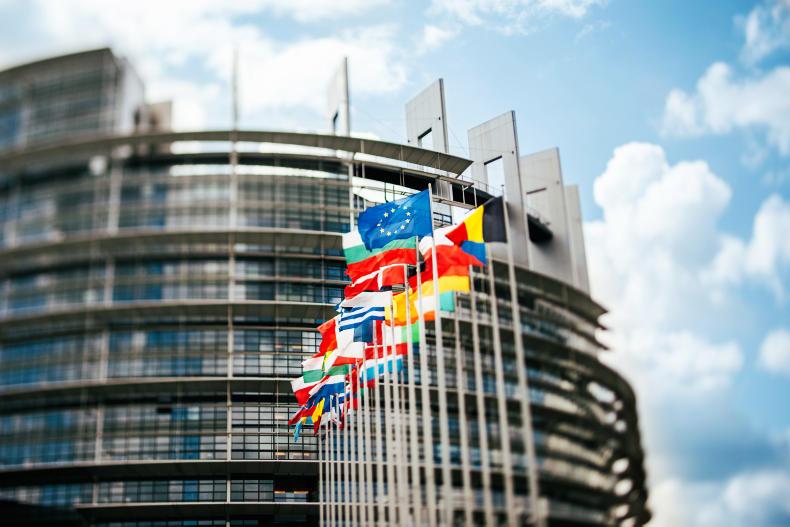There was great unease in farming circles over the past week following a decision by the European Parliament’s environment committee to reduce the Land Use Land Use Change and Forestry (LULUCF) pool from 280m to 190m shared across the EU.
There was further unease when the committee decided to start a trajectory to determine year-on-year emission reductions to 2030 in 2018 instead of 2020.
This would in effect mean that the amount of carbon allowance available each year to the non-Emissions Trading System (ETS) part of the economy, which comprises agriculture, transport and buildings, would decrease.
They also want to start the new period on whichever is the lower value between actual emissions and the established target for 2020, which would mean countries that fail to meet the 2020 target would still need to start at the 2020 target for the new period.
Restoration of credits
However, following discussions among the European Parliament’s political groupings this week in Brussels this week, there has been restoration of the LULUCF credits to the 280m originally proposed by the European Commission.

This is important for Ireland because it was previously agreed that this flexibility of offsetting change in land use to more environmentally friendly activity such as forestry would be worth 5.6% of Ireland’s overall target for 2030.
Ireland is committed to investing some €3.5bn between 1990 and 2030 in raising forest cover from 11% to 18% by 2050.
Targets for 2030 compared with target for 2020
EU emissions are regulated under either the ETS for heavy industry and non-ETS, which covers agriculture, transport and buildings and is the category of interest to Irish farmers.
Currently, in what is known as the Effort Sharing Decision (ESD), the EU is committed to reducing its greenhouse gas emissions up to 2020, with each member state contributing according to a limit placed on its emissions.
The effort of each member state was determined in relation to the level of its 2005 greenhouse gas emissions covered by the ESD, taking into account the relative per-capita GDP of the member state.
In 2015, 72% of Irish emissions were in the non-ETS sector, with 33% of all emissions in Ireland coming from agriculture and almost 20% from transport emissions compared with an EU average of just 12% from agriculture
EU countries that had a low GDP per capita were allowed to increase their greenhouse gas emissions relative to 2005, whereas those that had a high GDP per capita were expected to reduce their greenhouse gas emissions compared to 2005.
Ireland was considered to have a high GDP per capita, while most of the eastern European countries that were last to join had a low GDP.
Ireland’s targets
Ireland received a target of achieving a 20% reduction in its emissions by 2020 based on its GDP, the highest in the EU along with Denmark and Luxembourg.
In hindsight, this was impossibly high as 68% of Ireland’s 2005 emissions were in the non-ETS sector, with the bulk of these coming from agriculture and transport.
In 2015, 72% of Irish emissions were in the non-ETS sector, with 33% of all emissions in Ireland coming from agriculture and almost 20% from transport emissions compared with an EU average of just 12% from agriculture. The transport total is almost the same at 22%.
Therefore Ireland has a unique emissions profile which was probably not fully recognised in 2007 in terms of mitigation potential and certainly the economic crisis exacerbated any decarbonisation potential in transport and buildings.
Government targets
With the Green Party in government in Ireland in 2007 and at the height of the Celtic Tiger economy, an ambitious target seemed plausible to the government of the day for the non-ETS sector of the economy.
Performance in reducing emissions in two of the three non-ETS categories, housing and transport, could be dramatically improved if sufficient public money was available to invest in upgrading the national housing stock.

Transport too could improve, with lower-emission vehicles right down to zero where electric powered cars were involved.
Agriculture was always going to be a challenge, particularly with the ending of milk quotas on the horizon, which would lead to expansion in the dairy herd.
Crash
Whatever possibility there was of achieving these targets in 2007 quickly evaporated following the crash in 2008.
Public finances were decimated, leaving nothing for investment in upgrading the housing stock or transport.
Agriculture was the one bright sector of the economy and ambitious expansion plans were put in place in 2010 under Food Harvest 2020.
The outcome has been that with 2020 just two and a half years away, Ireland will come nowhere near its 20% target
This was not compatible with the 20% reduction in emissions targets. However, much improvement could be delivered within the agricultural sector and, at an EU level, Ireland is among the best performers in the category.
Food Wise 2025 was a further plan for agricultural expansion, again not compatible with rigid implementation of emission reduction targets.
Will Ireland meet its targets?
The outcome has been that with 2020 just two and a half years away, Ireland will come nowhere near its 20% target. The Environmental Protection Agency (EPA) estimates we will come in with a reduction in emissions of between 4% and 6%.
The unique problem Ireland faces in meeting its target was recognised at the European Council in October 2014 when it said: “The multiple objectives of the agriculture and land use sector, with their low mitigation potential, should be acknowledged, as well as the need to ensure coherence between the EU’s food security and climate change objectives.”
In addition, for EU member states with a GDP per capita above the EU average, targets “will be relatively adjusted to reflect cost-effectiveness in a fair and balanced manner”.
Potential difficulties
There was recognition of this in the Commission proposal setting out member state’s emission reductions in 2030 (in what is now termed the Effort Sharing Regulation).
This recognises potential difficulties in reaching targets set for 2030 for certain member states, including Ireland.
Part of the new Commission proposal is that annual emission limits are determined based on a linear trajectory, starting in 2020, from the average emissions for 2016-2018 based on the most recent reviewed GHG emission data.
What happens now?
This proposed starting point, which is a necessity for Ireland, has now been thrown out by the European Parliament’s environment committee.
Given that Ireland has no chance of meeting its 2020 target, this will, if it holds, have very serious consequences for us. The issue now goes to a vote of the full European Parliament.










SHARING OPTIONS